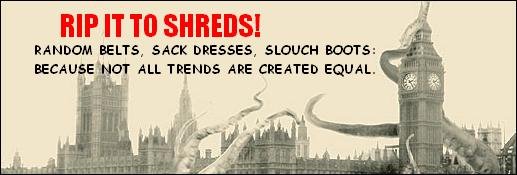 Seeing the glossy promotional posters for the new Ramona and Beezus movie starring Selena Gomez as Beezus has renewed the anger I felt as a tween when my beloved young adult books were turned into shiny, boppy movies that totally ruined everything about the books themselves.
Seeing the glossy promotional posters for the new Ramona and Beezus movie starring Selena Gomez as Beezus has renewed the anger I felt as a tween when my beloved young adult books were turned into shiny, boppy movies that totally ruined everything about the books themselves. Now when I re-read YA books, particularly those from the 70's and early 80's, I'm truly surprised at how spare and realistic they often are. The endings are often abrupt and unresolved, and instead of a lot of cheesy poetic editorializing, we often get the straightforward narration of a young person. Read Starring Sally J. Freedman as Herself, and be struck by the dark undercurrents of her post WW2 life coupled with her naivete and adolescent awkwardness, all told through her eyes. And what about Harriet the Spy? I knew that book was totally weird even when reading it as a kid- her relationship with Ole Golly and the line drawings of Ole Golly's mother terrified me. Roald Dahl is another one whose work clearly has a sinister, if kooky, edge (which was actually pulled off in the first Willy Wonka and the Chocolate Factory! And maybe The Witches? I can't remember.)
Even as a kid (though I was a little too old for the movies when the rash of 90's era ones came out) I was disappointed in these movies, which, distinctly, lacked any of the bite of the originals. I knew that Harriet was supposed to take place in the 1960's, that Matilda and her story were intensely and irrevocably British. I was aghast to see the girl cast as Sarah Crewe in The Little Princess; this was a character who was repeatedly described as odd, weird-looking, and a little off-putting. Sure, she had a kindly heart, but she wasn't supposed to be a child model.
And when I think about Ramona, I think about her overworked parents who struggled with money, her house in Klikitat street in the rainy Pacific Northwest, her so familiar hatred of staying with the babysitter or at another kid's house because of aforesaid working parents, and Beezus feeling horribly awkward and embarrassed about everything. This shiny, allergy-fighting pharmaceutical commercial-esque sunniness and Gomez' airbrushed face seem to have no relation to the original characters.
Taking the protagonist and giving her shiny hair and these ease of a one-dimensional popular girl is a common theme in movie-making, and somehow I can't imagine film executives pouring over Barthe DeClements oeuvre and saying, "Do you think we made this twelve-year-old girl character realistic? Do you think we picked up on the dryness if the original text?" Instead we get the Hannah Montana phenomenon, where everything for kids is glossed up and filled with ridiculous distractions, all made with the assumption that children cannot pay attention to anything for more than 20 seconds. They are probably thinking, "Little girls like glitter, hair extensions, pink, and commercial tie-ins!' We can take men and sometimes women seriously, but the media is clearly uninterested in how children might really think, act, and feel, even though we were all children once and of course can trace the route of our grown-up insanity from childhood.
Of course, this movie also comes after the recent trend of making movies ostensibly about little girls, but are really about the director's "vision," including The Fall, Tideland (do NOT see that one) and even the slightly better but still under the same category Pan's Labyrinth. These films featured young female protagonists only as innocent foils to the fucked-up goings on around them.
I love good YA because, at its best, it is simple, painfully realistic storytelling, as opposed to the meaningless jerking-off that makes up the work of so many "real" authors, who mostly seem interested in little girls sexually, or, again, merely as innocent foils. Is there a coincidence that the most famous "real" novel featuring a little girl is probably Lolita? I love good YA because it says, "These stories are not trivial." Believe it or not, realistic honesty in art if often more meaningful than obtuse truths and hidden themes. And because they are about kids, particularly little girls, the genre will probably never get its due.
PS: Ohmygod.
PPS: For more on this subject, read my The Golden Compass review!


4 comments:
That's a really perceptive comment about Pan's Labyrinth (which I basically liked--the little girl fucks up a lot of stuff, does not win, is not vindicated). And of course, in "meaningful" movies the little girl protagonist must always be sort of Lula-magazine/big-eyed waif/elfin-disheveled child, because no one cares if you're caught up in fascist struggles in Spain if you're not fetishize-able. Sparkly-pink for kids' movies; sub-Lewis-Carroll-photo for adults'.
I'm a total stranger, but I enjoy your blog very much indeed.
Thanks for the comment- I agree Pan's Labyrinth was definitely more complex and more about the little girl than most, but it still felt like she was an accessory to the movie, not the true center of it.
I'm glad no one really liked Alice in Wonderland 2.0 and I hope this means the CGI'd Lewis Carrol imagery/waif combo thing will go out of fashion. It's real tiresome and I blame Zooey Deschanel/mid 2000's indie culture!
I couldn't make it through that "Harriet the Spy: Blog Wars" trailer. I mean, really? REALLY?
I have other insightful things to say about little girls never being the true SUBJECTS of "art", but it's 9 million degrees out and my brain is fried. GREAT POST!!!
If you want to watch a great movie that's really about the main little girl, you should watch Spirit of the Beehive.
Post a Comment